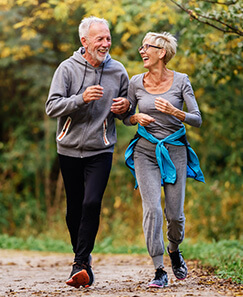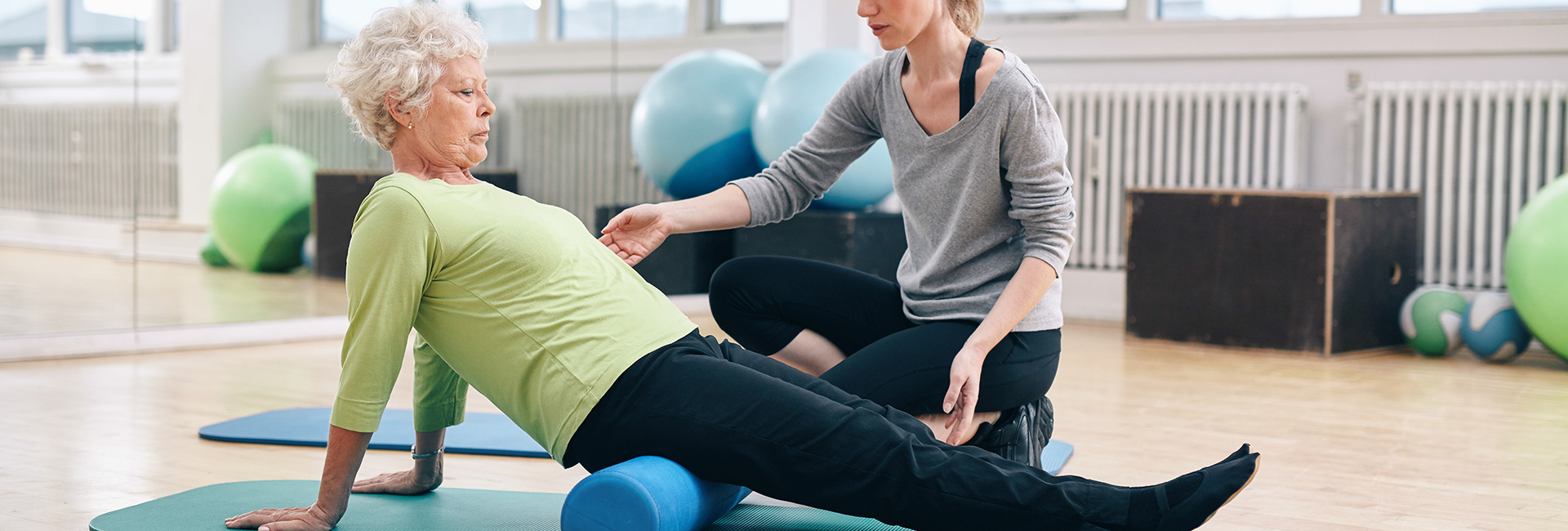Why use a Foam Roller?
You can use the foam roller to provide self soft-tissue mobilization (SSTM). Benefits of SSTM include improving muscle flexibility and tightness, decreasing lactic acid, decreasing muscle fibrosis (adhesions/scar tissue), and decreasing your risk for injury. By using your body weight, you will apply pressure through your muscles in order to regulate areas of increased muscle tone or tightness.
How to use a Foam Roller:
It is important NOT to roll over bony areas (like your knee) or areas where you have an open wound or injury (unless instructed by a medical professional). Always roll in line with the muscles and at a SLOW PACE. When you roll over a tight, painful area (muscle knot), slow down the speed and stay on top of this area for about 20-30 seconds or until you feel the area release. If it is too painful to stay on top of this area, then decrease the force by unweighting the area. When you are finished rolling, make sure that you drink plenty of water, just like you would after a massage. Use the foam roller as described at your own risk.
Thoracic Spine Foam Rolling:
While performing any of the Thoracic Spine foam roller exercises, always keep your abdominal muscles lightly contracted. In addition, always maintain a neutral spine in your neck and lower back, avoiding any arching that may occur. If you experience any pain, immediately stop performing the exercise.
- Extension
With Foam roller placed at the middle of your back (between shoulder blades) clasp your hands behind your head and bring your elbows together, keeping your neck in neutral. Slowly begin to roll up to the top of your shoulder blades (NOT TO YOUR NECK) and down to the bottom of your rib cage (NOT TO YOUR LOWER BACK). Repeat process, keeping neck and lower back from arching.
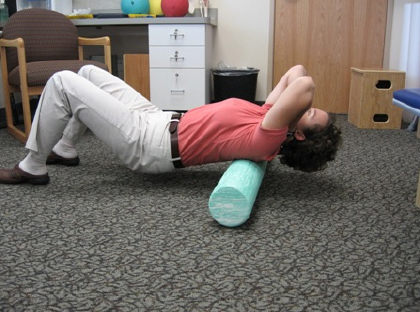
- Reaching over head
Lying vertically on the foam roller, clasp your hands together in front of you above your chest with arms straight. Slowly move your arms above your head until you feel a good stretch. This exercise should be PAIN FREE. Hold each stretch for 30-60 seconds.
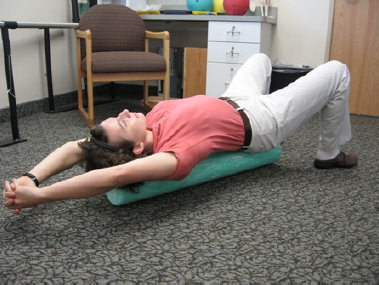
- Opposite arms reaching
Lying vertically on the foam roller, reach one hand towards your feet while reaching the opposite arm above your head. Alternate, reaching hands in each direction while keeping arms straight throughout the exercise. This exercise should be PAIN FREE. Perform each reach 10 times per direction, with a slight pause on each.
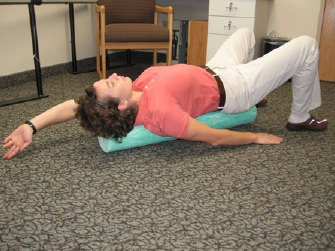
- Spine and pectoralis stretch
Lying vertically on the foam roller with your buttocks and head supported, bring your arms to 90 degrees with your hands facing the ceiling. Gently rest your arms to the ground and hold the stretch for 60 seconds. If the stretch is too much, place towels or pillows under your hands so that the stretch is more comfortable. This exercise should be PAIN FREE.
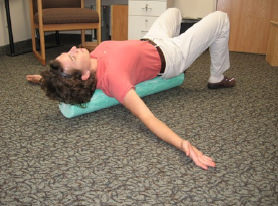
- Spine and shoulder range of motion - snow angels
Lying vertically on the foam roller, move arms like a “snow angel,” trying to keep your hands touching the ground. When you cannot keep your hands on the ground, gently move your hands back to where you can touch but feel a stretch. Perform 3 deep breaths, and bring your arms back down. This exercise should be PAIN FREE.
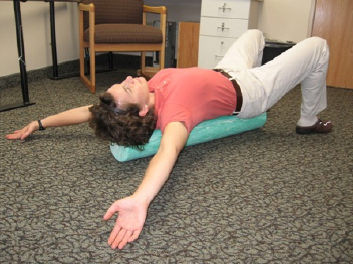
- Trapezoid stretch
Lying on the foam roller vertically, clasp your forearms together or straighten your arms out at shoulder height. As you roll your body to the right, your arms go to the left (your head should also follow your arms). This motion should form a “trapezoid shape” with your arms. Repeat to the opposite direction. You can hold the stretch or alternate back and forth. This exercise should be PAIN FREE.
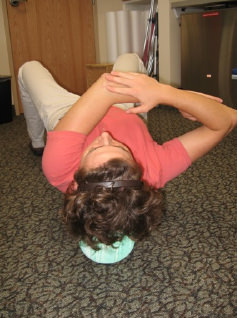
- Ironing
Lying on the foam roller vertically, place your arms above you shaped like a square with elbows at 90 degrees (see picture). While keeping your trunk flat like a table top, move the roller side to side underneath you while maintaining a level table top with your trunk. This exercise should be PAIN FREE.
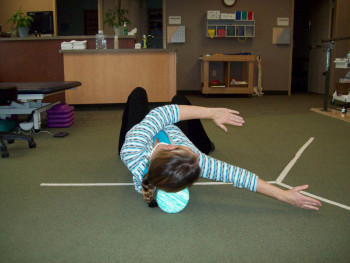
- Rotation
Lying on the foam roller vertically, clasp your arms together as shown in the picture. Slowly move your arms to the right or left, maintaining the shape of a square with your arms (your head should follow your arms as shown). Repeat in opposite direction. This exercise should be PAIN FREE.

Start your journey to pain-free living today.
Our experts are committed to providing effective, efficient, and compassionate care to help you live a pain-free, active life. Our passion is to help every patient reach their goals on their journey to recovery and optimal performance.
